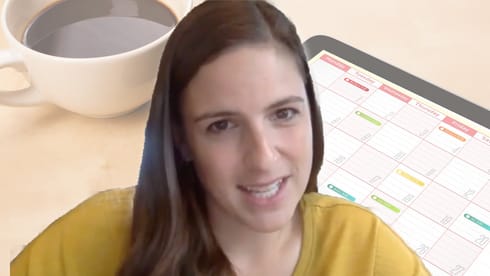Why break weeks aren't wasted weeks
Last week was a break week in our year-round homeschool schedule, and it was great!
It is so easy to slip into thinking that down time or vacation time is time that doesn’t “count” for anything. We say to ourselves: “I have 36 weeks of school and 16 weeks off in a year.” Then think to ourselves that those 16 weeks are not profitable for learning – they don’t “count,” and therefore we rather look down on them and feel guilty about taking them and think that maybe we should use our time better and keep getting stuff done.
But that’s not healthy.
But break weeks provide us time for leisure, which is essential to a classical education, not time “off.” And that doesn’t mean we have different things – like tea parties or nature walks – planned and scheduled for break weeks. It means that during break weeks we’re practicing living a life where our minds are a pleasant place to spend our leisure.

So here’s a picture of our break weeks, and why I think they are just as important to our lifestyle of learning as our school weeks.
Pretty
My mom gave Ilse a craft bin for Christmas, stocked with tape and construction paper and scissors, and Ilse’s just been a busy little maker in her room, creating all sorts of things out of the basic material. Her walls are now decorated with her own creations, as well:

Break weeks gave her hours to sit by herself and come up with creative uses for her collections of random bits and papers.
Happy
With good weather coinciding with this February week off the academic plan, there was also much digging and fort-making – hours spent out-of-doors.
A typical school week for 9 & 11 year olds rarely includes hours out of doors every day. But there is time on break weeks to spend a large portion of the day outside.
Funny
During this break week the children watched zero tv, zero movies, and only played computer after it was dark (the 9 & 11 year-old played some days after the younger set went to bed).
In addition to lots of drawing, digging, and Legos, there was also lots of reading – sometimes in unusual locations. The boys naturally took advantage of the unseasonably sunny days and read out on the patio, up in trees, and spread out on the grass.
Hans read War of the Worlds in one day, and then holed himself up in his room and came down later with this:

If reading and creating based on reading happens of its own accord, self-directed, it is so much more profitable and effective than if it is scheduled and assigned. Break weeks ensure there is plenty of self-directed time for the kids to do their thing – often after a stretch of being “bored” – to which I say, “I can give you work or you can go make yourself interesting.”
Real

And, let’s not forget that break weeks allow us to reign in the entropy that sets in after weeks-on-end of homeschooling.
Turns out cleaning out under couch cushions is a great job for a 4-year-old.

Don’t be afraid of, or feel guilty for, allowing your children a life of leisure growth.
Just because a box isn’t being checked or you can’t put your finger on what’s being learned, does not diminish the value of children learning to live a rich and full life.



